
Hello! Welcome to my Monday Morning Motivator
I would say good morning, but I'm late. By about 12 hours. So, instead, I will say welcome to my Monday Morning Motivator. I'll be the first to admit that I struggle on Monday mornings, and today was no exception, which is why this post is coming to you at this hour. I got very little sleep and morning came way to early for my liking. I was wholly unprepared for all the things I needed to do today. By the way, I'm a mom of 3 (ages 7, 5, and 1.5) and also do part time in-home daycare for 2 (ages 4 and 1) once a week. Today, my 2 borrowed extras came over at quarter to 5 in the morning. I turned off my alarm at 5:45 after coaxing my 18 month old back to sleep because my motivation had taken a vacation. When I did wake up, I did what I always do, and sometimes multiple times depending on the level of motivation I'm harboring for the day. And that is: make coffee. That's right. Coffee. It was my best friend this morning. It is my motivational kick in the pants when I need one. If you drink coffee, or any other liquid form of motivation, it's sometimes that little something extra we needed to really get going. I will work on trying to improve my positivity about Mondays and will continue to bring my thoughts about how to do that to you here. So until next week, just remember:
Have a great week!
Surviving the Home Inspection Hits #1 On Kindle!
Very excited that my book, Surviving the Home Inspection, hit the top spot (probably briefly given the ephemeral nature of Amazon's bestseller lists) in the Kindle store in the Buying and Selling Homes category.
I'm already planning my next project- deciphering FHA, VA, USDA, inspections for the sellers.
How Much Difference Does Insulation Make?
I did an inspection in Lewiston late last year on a very cute little bungalow near Normal Hill. The home was classic brick with trees lining the street in front. The clients were a young couple buying their first home.
One the findings that we came up with is that there was nearly no insulation. The home had an old beast of a furnace that kept the home warm - when it ran, and it definitely like to do that.
Jack asked me for some advice about how to handle this. We talked about the advantages and disadvantages of blown fiberglass and blown cellulose. One nice thing about our local Home Depot is that they will essentially lend you the equipment to insulate the home yourself if you purchase a set amount of the insulation from them. It's a pretty good deal, one that I took advantage of in my home.
Jack sent me these pictures, a before-and-after of the attic space. It's pretty impressive, though it's going to make it a lot tougher for the next inspector to traverse the attic.
Jack put in about a dozen inches of new insulation. One of the advantages of the blown cellulose that he chose is that it air seals much better than fiberglass. It's also much less expensive.
It always makes me happy when I get a chance to see my advice make a positive difference for the people that I work with. In this case, it's a young couple who just spent one afternoon and made their house much more affordable from an operating expenses perspective.
How more affordable?
Jack sent me the numbers - bear in mind that this has been a really mild winter, so the numbers are a little lower than in a cold year.
- Month 1 - $209 for gas and electric.
- Month 2 - $125 for gas and electric.
So, the bill dropped by 40 percent over the course of a month. Pretty darned impressive and I'm awfully happy for the family. Good job to them!
Surviving the Home Inspection
The Essential Seller's Handbook for Surviving the Home Inspection is now on sale at Amazon and Barnes & Noble. I have the price discounted 50 percent for a short period of time.
The trade paperback edition should be ready in two weeks.
Avoiding Frozen Pipes
The Washington Post has an article on what to do if your pipes freeze. Not a current worry here, but worth filing away for the future.
Here's some of the advice that I left:
Let's throw some extra pointers out there . . .
1. Leave the sink base cabinets open to allow better air flow, especially in older homes with poor wall insulation.
2. Make sure you don't have any hoses hooked up outside and that the hose bibs are protected with insulating covers.
3. If your house is vacant, call a friend/realtor/somebody to check on it and make sure the heat is on.
4. If you have a crawlspace, close the vents for the time being. Ideally, any plumbing line in the space should be insulated.
5. If you have a basement look for water lines that are in contact with concrete. Put a piece of insulating material, even some rubber, behind the lines to get them off the walls and fill the air gap. Pay attention to the laundry lines in old houses.
6. Add portable electric heat to spaces where pipes are subject to freezing. Use as little heat as you can and make sure there are no combustibles nearby.
Better to go to overkill on precautions than to deal with a flood.
What are those stripes on my wall?
I had a chance recently to perform a "mold' inspection. The occupant of the home complained of mold growth and was particularly concerned about the stripes that were growing on his walls.
I performed a visual exam the walls but the issue was obvious as soon as I entered. .The striping effect I saw is typical marking that occurs in older homes that limited wall insulation and (generally) a four-inch wall cavity.
The striping is not a biological growth but the result of house energy dynamics and occupant behavior. In the wintertime, the studs are substantially cooler than the cavity spaces. The movement of warm air is to the cooler stud, consistent with the Second Law of Thermodynamics. When the air reaches the painted drywall surface, it deposits oils, dust, and smoke on the surface. The reason that the nails show more on the wall surface is that they are metal and better transmitters of energy, and thus colder.
A lot older houses that had smokers exhibit these types of stripes. Other causes are the cooking greases and smoke from the kitchen, oil-based air fresheners, wood fireplaces, and candles.
Candles are a biggie.
So my advice is not to panic. Clean the walls, and then assess which of the likely causes put the particulate matter into the air in the first place. Once you determine that, you have a means of control.
What if you lose the key?
You know you spend too much time inspecting when you watch a movie (Zodiac) and shout about the deadbolt lock.
In this case, the protagonist, while trying to deduce the identity of the Zodiac killer, visits a home occupied by a guy that qualifies as slightly north of spooky. Hero flees the basement (sensible), heads up the steps, sprints to the door and - Trapped!
He can't leave because the door has a keyed deadlock.
I normally recommend replacing these with a deadbolt that has a knob instead for fire evacuations, but hey, if you live near an ax murderer and need to leave expeditiously, make the change.
Testing Water Temperature during the Home Inspection
As part of my home inspections, I test the water temperature at a minimum of one fixture, and sometimes, more. The State of Washington Standards of Practice states that the Inspector will report "Whether or not the water temperature was tested and state that the generally accepted safe water temperature is one hundred twenty degrees Fahrenheit."
Most inspectors simply report the generally safe accepted level and let it go. I don't for reasons that I'll cover here in a moment. First, the following will give you a sense for how hot water can injury. Note that these are for average adults, not small children or the very elderly.
- Water at 100 degF or below is unlikely to scald an adult occupant at any exposure time.
- Water at 120 degF for 5 minutes can cause 2nd & 3rd degree burns on adult skin
- Water at 130 degF for 30 seconds can cause 2nd & 3rd degree burns on adult skin
- Water at 140 degF for 5 seconds can cause 2nd & 3rd degree burns on adult skin
- Water at 150 degF for 1.5 seconds can cause 2nd & 3rd degree burns on adult skin
- Water at 160 degF for .5 seconds can cause 2nd & 3rd degree burns on adult skin
My record for water temperatures, actually measured in a home in Moscow, was 179 degF, hot enough to make coffee with. 150 degF is not all that unusual.
The reason all this came to mind is a report of Legionnaire's Disease in the Bronx. For those unfamiliar with the disease, it is bacterial in nature and a particularly nasty form of pneumonia. It is water-borne but, to infect, it needs to be inhaled. Think humidifiers or showers where the bacteria in the water is atomized to particles that can be breathed.
The types of systems most likely to create ideal conditions? Cribbing from OSHA, "Warm, stagnant water provides ideal conditions for growth. At temperatures between 20°C-50°C (68°-122°F) the organism can multiply. Temperatures of 32°C-40°C (90°-105°F) are ideal for growth. Rust (iron), scale, and the presence of other microorganisms can also promote the growth of LDB."
Sounds a lot like the well water we have here, conveniently heated to nearly ideal conditions for growth inside our water heaters.
Per OSHA, "Maintain domestic water heaters at 60°C (140°F). The temperature of the water should be 50°C (122°F) or higher at the faucet."
That's why I test the temperature and why, if the client is attending the inspection, we discuss the temperature. I don't call out high water temps as a safety hazard until I measure 130 degF. Even then, the discussion starts first with a question about who will be living in the home with the client.
I explain the state standard, which is based on manufacturer liability standards, as well as energy conservation standards. Then I explain the third leg of the risk triangle, bacteria control.
The reason that I might consider testing at more than one location in the home is that the newer faucets, especially for tubs and showers, have tempering valves. That is, the valve blends cold into the hot to moderate the temperature to safer levels. The place to get the most accurate reading on the output temperature of the water heater is usually at the utility sink since the hot and cold water controls separate.
If I get a low reading but a very fast rise on the temperature, I look for additional test points to confirm my reading. I don't want to inform the client that the temperature is under 120 degF if the test point is subject to tempering.
Depending on their particular circumstances, the clients may wish to leave the water temperature at a higher level than the standard. The point is to ensure that they are well informed on both the pros and cons of setting the water temperature for the home.
Changes Abound
I haven't posted regularly to the blog. Bad Paul.
I did, however, do a full site redesign, and hopefully the site will be easier to use and easier on the eyes. I've moved the blog off the landing page now that I have a decent looking site.
Bells and whistles are coming - some are still in, like online scheduling. A new feature is the ability to sign the inspection agreement electronically. I'm looking at putting a means for paying online as well - I know it sounds simple but the federal regulations, hoops that come in a multitude of sizes and heights, make it a bit interesting.
You might also notice a name change. I've left the NPI family. This was done at my request and based solely on the changes that we've had in life - the addition of three sons-in-law and six grandchildren, some success in publishing. With the additional commitments of time to personal ventures, I didn't feel that I could properly abide by the requirements of the franchise. Roland Bates, President of NPI, was enormously gracious in releasing me from the non-compete clause in the contract.
For years, I've been the hardest working inspector in the region, frequently working seven days a week. I'm looking to drop that to five and a half days per week. Totally selfish, I know.
I've eliminated a few things, most notably the toll-free number. In an age on unlimited long distance calling on cell phones, the expense does not make sense.
Still coming:
- a complete redesign of my inspection report with the aim of making it more informational and more user-friendly.
- A course for inspectors on residential fire suppression systems
- My book for home sellers, Surviving the Home Inspection (available March 15th)
Should be an exciting year. May yours be equaling exciting and fulfilling!
Play day in a crawlspace!
I've had folks tell me that you couldn't pay them enough to go into a crawlspace. 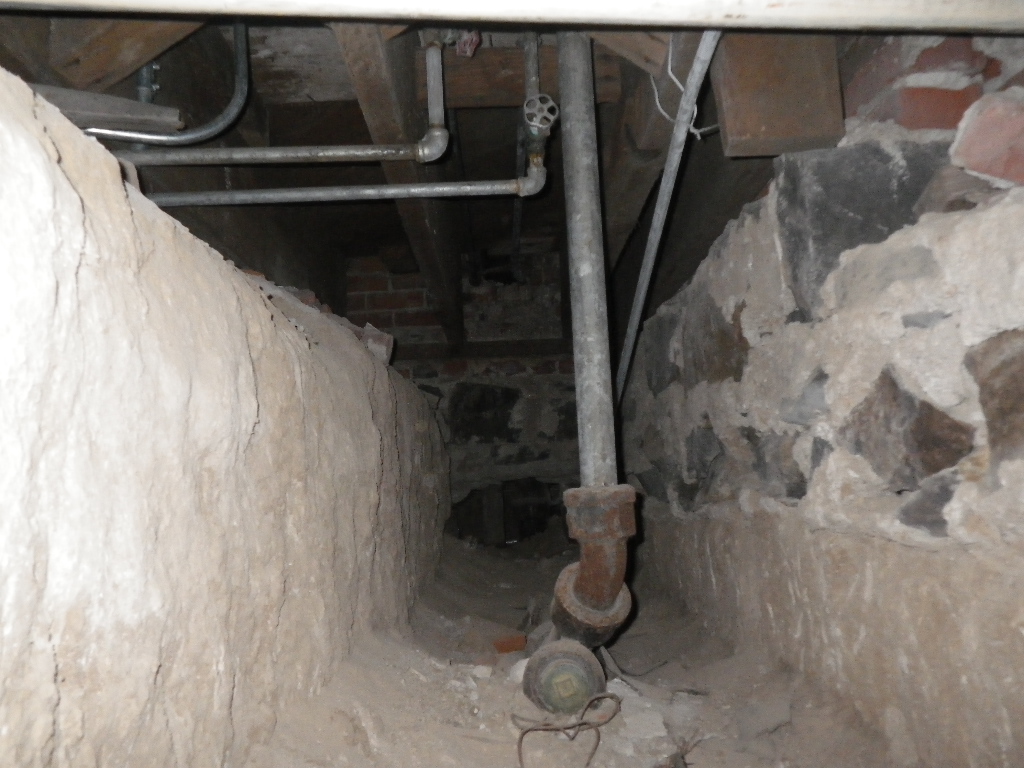 I usually don't have that problem. Today, though, I did it for free.
I usually don't have that problem. Today, though, I did it for free.
Why? A) Because it was a 120 year old building that I knew I'd end up referring to an engineer; B) it was a 120 year old building that was totally cool to check out. Went from one basement, all the way through to the other basement addition, climbed out on a piece of abandoned equipment and had to climb up the old elevator shaft on a rickety old homemade wood ladder wired onto some old conduit.
Residential Fire Sprinkler Systems
One advantage of being appointed to the State Building Code Council is the introduction to new knowledge. Yes, I know, that sounds incredibly nerdy. Welcome to the world of home inspection. In the model building codes published by the International Code Council, fire suppression systems have been required in commercial settings for decades. The introduction of sprinklers into the home has been much slower. As of now, only 4.6 percent of occupied homes (including multi-family residences) are equipped with the systems but that represents a substantial improvement. The pace of installations has increased as states begin adopting the model code and incorporating it into the new building standards.
Now for the fun stats on dying in a fire. 85 percent of all fire-related deaths occur in the home. You cut our risk by a third if you have smoke detectors. In acknowledgment of human nature, the odds improve to fifty percent if the smoke detectors are working. (Now would be a fine time to check the batteries in your detectors.)
Your risk drops by 80 percent if you have sprinklers installed.
Despite the statistics, the public resists the idea of installing sprinklers. Two factors play into the resistance. The first is cost. Costs continue to drop which is the good news. The bad news is that they still are not inexpensive. The estimated cost in new construction is $1.35 per square foot of sprinklered space.
The second issue is the misinformation regarding the systems. You might be shocked to discover that modern television has fibbed a bit about sprinklers. When a fire sets off the spray nozzles, they don't all go off - just the one that is needed to put out the fire, which it usually manages to do so before the fire department can even get to the home.
If you've ever seen a home after the fire department hosed the place, one sprinkler makes far less a mess. That is, in fact, how 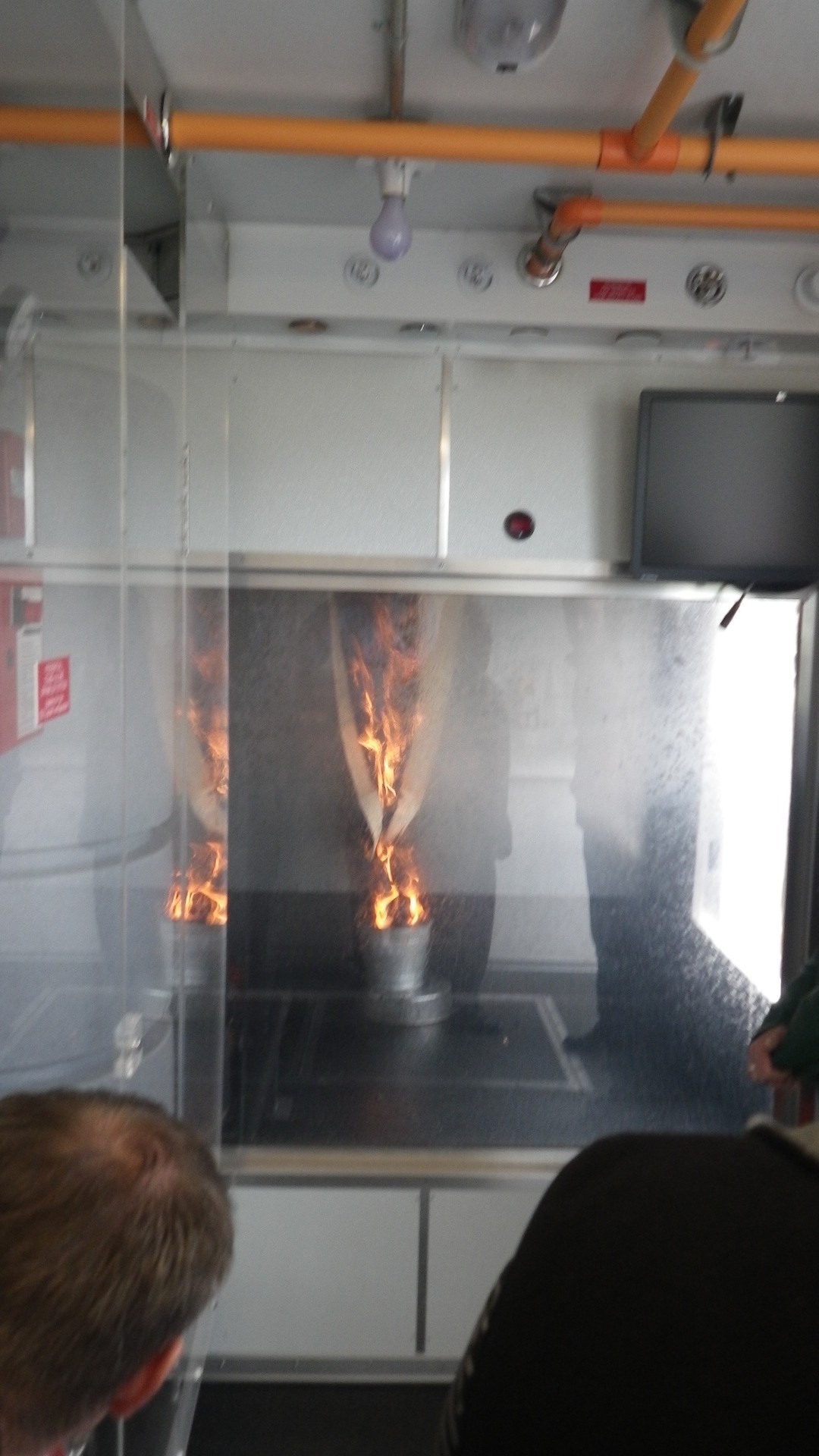 many heads activate in a fire - one. The property loss is usually about 70 percent less with sprinklers, a positive feature for insurance companies.
many heads activate in a fire - one. The property loss is usually about 70 percent less with sprinklers, a positive feature for insurance companies.
Another fear is a false discharge. The new systems are designed to prevent that by not activating until a higher temperature is identified. Depending on the system, the activation temperatures is usually150 degrees. At that temperature, the glass bulb that activates the individual head to put out the fire.
I had the opportunity to watch a demo put on a by the Washington Fire Sprinkler Coalition. They tested a system under controlled conditions and the portable system worked beautifully. The fire was extinguished within seconds.
According to the men running the demonstration, this is typical of the response time of the modern sprinklers. If you have these in your home, you can be more confident that, in the event of a fire, you are much more likely to avoid tragedy.
The Antidote for Nastigrams
I wonder sometimes whether home inspections matter a darn given that I get nastigrams from sellers and their agents with depressing regularity. Then I get this from a client, via email: "Hi Paul, I wanted to write and thank you for recommending I get the gas heat stove serviced in the house on Van Buren St you inspected for me in the Spring. That recommendation saved my life, and my dog's life. "
It matters.
High Water Pressure
 When I first bought my current home, the water came out of the shower head like a fire hose tackling a four alarm torch job.
It was a mite high.
When I first bought my current home, the water came out of the shower head like a fire hose tackling a four alarm torch job.
It was a mite high.
This was okay with most of the family as they were female and had long hair. For those that have not raised daughters, a moment of education. Long hair requires lots of water to get all the shampoo out, preferably at decent pressure so that the hair rinses clean all the way to the roots.
It was also something I was aware of as I tested it as part of my inspection prior to purchasing the house. I do this for most houses I inspect, provided that the water is on, and I can test without making an enormous mess inside. Usually, I use a hose bib on the exterior of the home. As you might imagine, this is not one of my favorite tests in the middle of winter.
Unfortunately, no matter how popular the fire hose effect is for my kids, it’s not good for the plumbing system. The plumbing is actually a highly engineered system, as are all the fitting, fixtures, and appliances attached to the supply plumbing.
To give you an idea of the potential for trouble, think about your plumbing lines and connections as balloons. What happens to the balloon if you put too much air into it? Yep, it pops. The plumbing does as well, though probably (but not certainly) as catastrophically.
You have hundreds of fittings within the home –not just on the pipes, but on the appliances such as the water heater, the dishwasher, and the clothes washer. You also have a multitude of O-rings, valve fittings, and the like on your faucets, their valves, and the shower heads.
That’s a lot of spots with the potential to leak.
High water pressure also causes early degradation of the appliances. Dish and clothes washers are designed to operate at specific pressures, usually 15 to 80 PSI. Increasing these also increases the wear and tear on the equipment, shortening their service lives.
So how do you know if your water pressure is too high?
Well, a pressure washer effect in the shower is a good clue but testing is the easiest way to know exactly what the static pressure is. You can buy a standard water pressure gauge for about $10 at your local hardware store, or even online from Amazon. Simply screw it onto a hose bib outside and read the pressure. You can also test indoors at the washer hose connection but have a small bucket or pan ready to catch the drips.
A word of warning – we do have some municipalities in our region that have separate water supplies for the indoor and irrigation water systems. Make sure that you are testing the potable water supply. The washer supply will be part of the potable system.
What to do if you have high water pressure.
Ideally, you would like to see the water pressure between 40 and 80 PSI (Pounds per Square Inch) when you test it. This is considered the normal range though if I tested once, during the middle of the day and hit 82 PSI, I would be inclined to re-test, especially during the peak usage hours to see what kind of pressure drop occurs when everyone is home and using water for showers, cooking, and doing dishes.
If you measure it and you do have high water pressure, correction of the problem is as simple as installing a Pressure Reducing Valve near the main valve where the primary water supply enters the building.
Now, I did say “as simple as . . . .” That doesn’t mean that I recommend that you do it. I recommend that this work be done by a licensed plumber, especially in older homes that may have supply lines that are degrading. It is not an expensive repair and I feel it is worth having a person with the training and proper tools tackle a job that, done incorrectly, would have a geyser spraying across the house.
Is Your Attic Like A Dry Sauna?
Summer time has arrived in Lewiston and Clarkston with it's usual suddenness by bursting upward 20 degrees in just few days to bust the 100 degree barrier. Fortunately, as they say, it's a dry heat.
Pretty much what I expect from attics this time of year.
High attic temperatures are not uncommon and, to a small extent, unavoidable. The average roof acts as a large solar energy collector and, depending on the axis of the house, can accumulate very high heat loads. My home, orientated with a east-west main axis, has extensive roof exposure to the south that matches the arc of the sun through the sky. Ideal when I someday add solar PV to the roof, it now acts to increase my heat loads.
High attic temperatures cause several problems inside and outside the home.
Inside, the heat places an increased load on any cooling systems that you have. I've measure ceiling temperatures as high as 120 degrees from the heat generated in the attic. The less insulation you have, the more pronounced (and expensive in utility costs) this becomes. In high humidity environments, this is even worse due to the 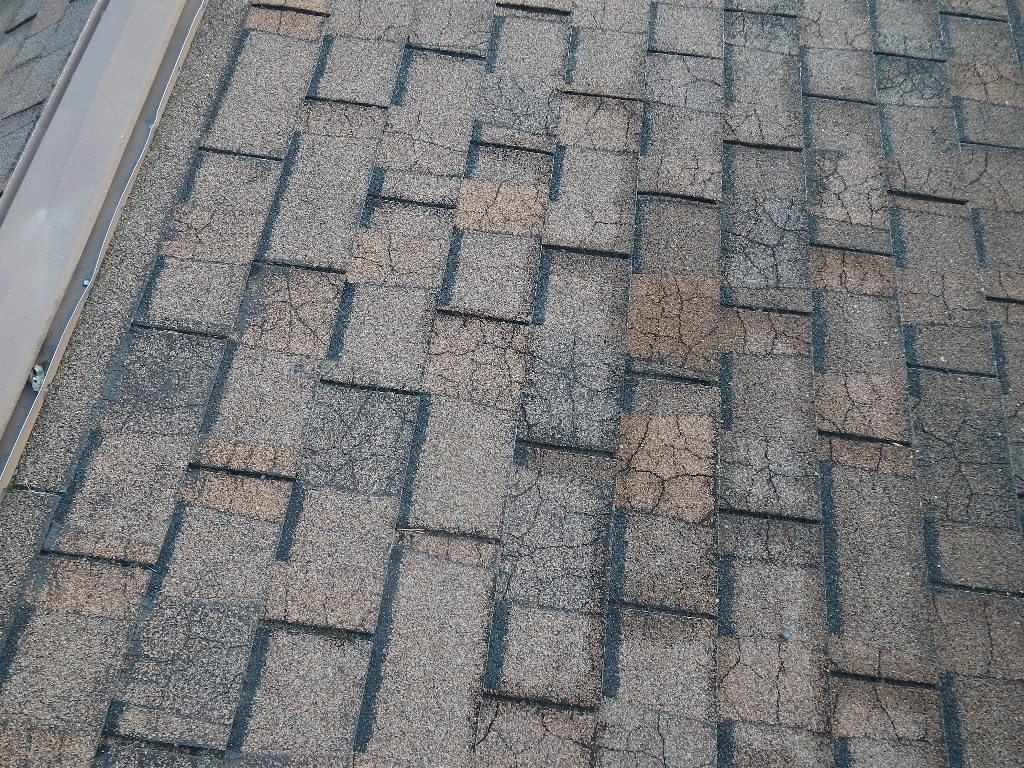 nature of water and its ability to act as a heat sink, absorbing the energy. To balance it out, you end up running the air conditioner longer, adding to it's wear.
nature of water and its ability to act as a heat sink, absorbing the energy. To balance it out, you end up running the air conditioner longer, adding to it's wear.
On the exterior, shingles are subject to thermal cracking. That is, the backing material of the shingles, usually fiberglass, is impregnated with asphalt and over-laid with granules. When the roof temperature climbs, these materials go through a wide range of expansion and contraction, but not at the same rate. The backing material can split or the asphalt cracks, just as you've probably seen it do in a driveway.
Either way, you have shingle damage that will lead to early failure.
Preventative measures include improving the ventilation in the attic. Too little ventilation traps energy as the air becomes superheated. My record for attic temperatures was 154 degrees. I wasn't in there long and it took a good hour to recover. 140's are not uncommon.
Attic ventilation can be improved by ensuring that the appropriate venting is in place. Often I see ridge vents improperly cut. Too narrow a vent does not allow enough hot air to escape, raising the temperature. The same will happen if there is no ridge vent and the static or gable vents don't move enough air.
Another common defect is to have too little air entering the attic space or from the wrong location. Older homes may only have gable vents located of either end of the home. Building science has demonstrated that this creates an air passage way flowing directly from gable to gable without ventilating the lower reaches of the roof assembly.
Improving this in the short term can be as easy as adding new soffit vents to improve air intake, adding a ridge vent (or having it properly cut), or adding an attic fan to increase air movement. All of these, by the way, have beneficial effects on mold and fungus growth.
A longer term approach is to plant trees carefully, determining where they will provide the maximum amount of shade without endangering the home.
Remember that southern face on my house? I have a 100 year old walnut tree on that side and, on the east, a quaking something-or-other (I'm a home inspector, not an arborist. Sorry.) The old folks had the right idea, a century ago.
They did forget to plant on the west corner. I've put in an Asian pear tree. It will be a few years until it gets tall enough but I can wait. When it does get big, it's a two-fer: shade and fruit.
Governor Inslee's Executive Order on Energy Efficiency
Governor Jay Inslee has issued an Executive Order EO 14-04 yesterday that will mandate significant changes in how the residents and businesses of the state will obtain and use energy.
The State Building Code Council is tasked with:
develop, and implement to the extent possible and consistent with state and federal law, a new statewide program to significantly improve the energy performance of both our public and private buildings, taking into account existing state and utility efforts. The program must accelerate the cost-effective energy efficiency retrofit of existing buildings, with a support system that provides information, consumer protection, and assistance to businesses and homeowners. The program must ensure that all new buildings are as energy-neutral as possible, with advanced envelopes, efficient appliances, on-site generation, smart controls, and other features, where practicable.
This change will affect rental property first as evident in the third bullet point:
Support vulnerable and low-income populations through weatherization assistance, setting minimum standards for rental housing energy efficiency, . . .
I fully expect that the provisions that Governor Inslee has set forth will lead to large changes in the manner in which homes are constructed and the way that remodeling is done. I also anticipate that these changes will be relatively expensive to implement.
Anti-tip Bracket
I had a new stove delivered to the house. My wife said the installers were wonderful except . . . they didn't install the anti-tip bracket. I'll do it later, of course, but it's part of the manufacturer's recommendations. Pros should know this and get them in for their customers. 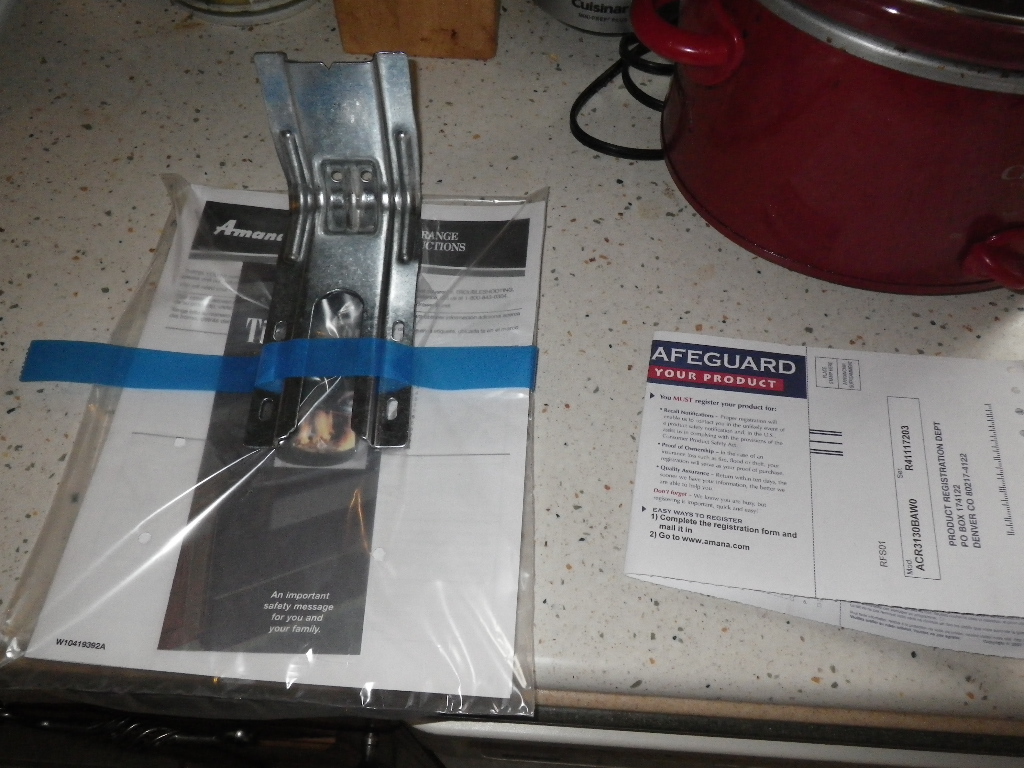 One of the many things I look for in an inspection.
For those that haven't seen one of these before, the anti-tip bracket is a device that is installed to keep a free-standing appliance from falling over. This can happen in a variety of ways, from innocent babies climbing on the door when it's down, to the elderly grasping the edge to avoid falling to . . . well, failures of human intelligence.
One of the many things I look for in an inspection.
For those that haven't seen one of these before, the anti-tip bracket is a device that is installed to keep a free-standing appliance from falling over. This can happen in a variety of ways, from innocent babies climbing on the door when it's down, to the elderly grasping the edge to avoid falling to . . . well, failures of human intelligence.
(The only part about the video that surprises me is that it was a young lady - doing as much work as I do around university campuses, this is the sort of thing I expected to see from a frat house.)
There are two ways to secure the stove. It's not very complicated. The one in my picture is a floor mount that has a slot for the rear leg of the stove to slide into. The second method, not used as much any more, is to use a bracket that attached to the wall with a hook on the back of the stove.
Installers don't like to spend the extra time since they always have a 'next' job to get to. Not installing it, though, voids the manufacturer's responsibility if the stove does tip.
On a side note - a daughter of mine didn't understand why I checked for them, until her daughter climbed the stove. Now she gets it. And keeps telling my grand-daughter - who's a peach - to quit it.
Underground Oil Tanks
In the last month or so, I've run into a ton of misinformation regarding underground oil tanks. Early in the month, at the ASHI-WW training session, I got involved in a conversation with inspectors from western Washington. Apparently, there are companies on the west side that will remove the tanks and perform mitigation, for $5,000-$10,000. Discovery of an oil tank on a property there often kills the deal in a dispute about who mitigates the problem. By the way, keep in mind the size of those tanks. It's actually an important number. The second occurrence was on the Idaho side of the line. Similar deal, oil tank was present (and in use with a converted coal-burner now acting as the oil-fired boiler.) The agent was concerned because, in her investigation she had contacted the City of Moscow, who referred her to the Idaho Department of Environmental Quality (DEQ) and said that there were the folks that managed the decommissioning of underground oil tanks. Folks, any time the DEQ gets involved the price tag goes up. It's the nature of what they do. In this case though, the City of Moscow gave bad advice, the same bad advice that the Washington home inspectors have been getting.
First, a little history . . . .
Above Ground and Underground Oil Tanks
These tanks store the oil that is - or was - used to fire the furnace in the house. Depending on the region, these tanks could be above or below ground. Above ground tanks made for easier monitoring but the home heating oil has a tendency to 'jell' in extreme cold so a means of keeping the oil liquid and flowing was a necessity. The above ground tanks were easy to deal with when the homeowner eventually converted from oil to gas or electric heating. Empty them out and haul them away.
Underground oil tanks poses separate issues.
There are thousands of unused underground residential heating oil tanks in existence and many still contain heating oil. These tanks are typically 300 to 500 gallons in size and made of 12 gauge steel (about 1/8 inch thick). They average about 30 years before corrosion makes them prone to leaking, but the life of individual tanks varies widely depending on the properties of the surrounding soil.
These tanks were often just abandoned in place, the only clues that they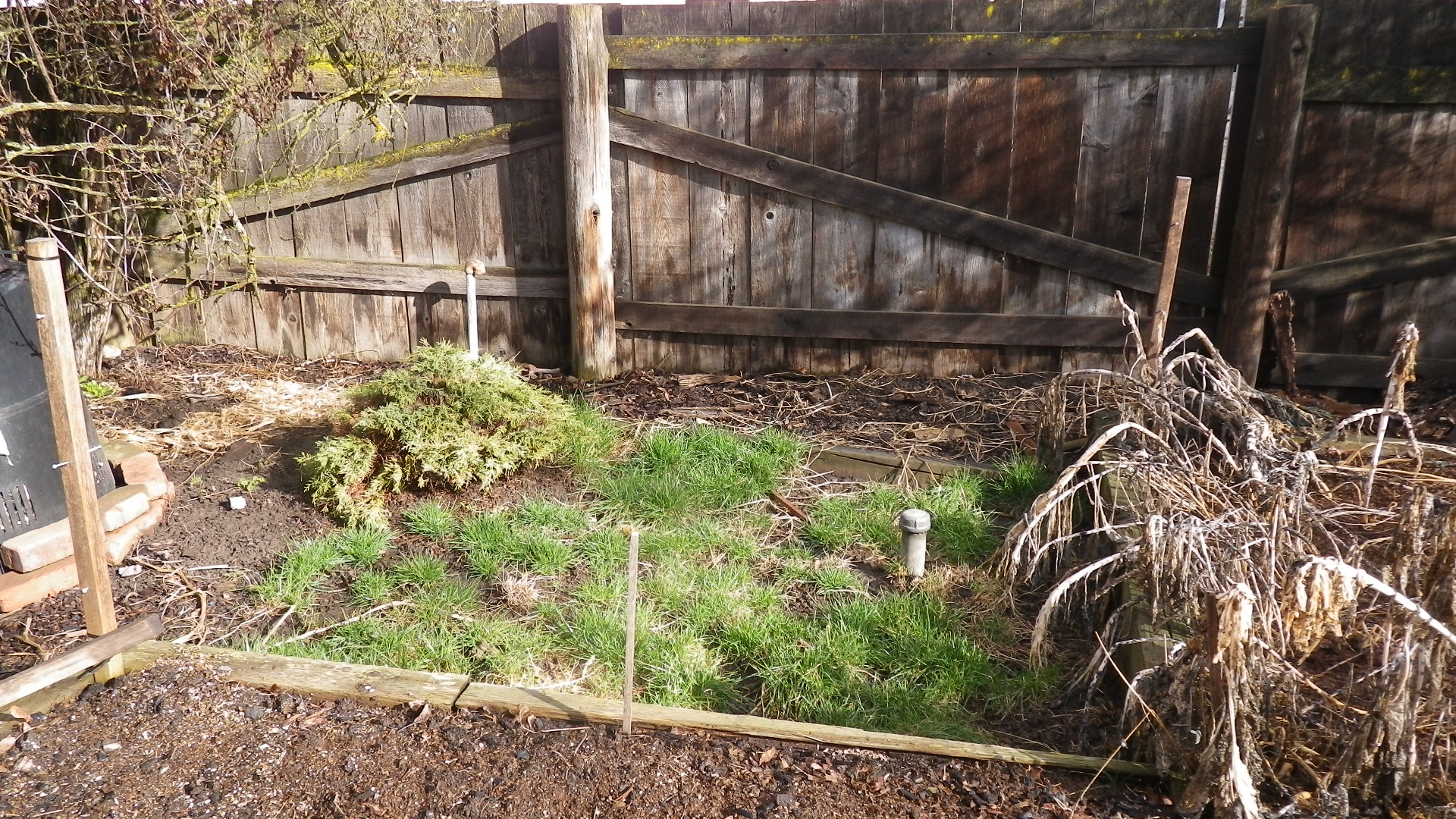 still exist, a copper feed line, or a breather vent, or the fill cap. Most of the tank, ranging in size from 200 to 500 gallons, are hidden from view. Even the pieces above the ground on the exterior - the fill pipe and breather vent - might be obscured by vegetation. In short, they can be really difficult to identify.
still exist, a copper feed line, or a breather vent, or the fill cap. Most of the tank, ranging in size from 200 to 500 gallons, are hidden from view. Even the pieces above the ground on the exterior - the fill pipe and breather vent - might be obscured by vegetation. In short, they can be really difficult to identify.
Under Washington State regulations, the home inspector is required to "Report any evidence that indicates the possible presence of an underground storage tank."
Myths
Myth 1 - The EPA regulates underground storage tanks so homeowners need to follow their regulations
This is the source of most of the confusion. Remember when I said to keep the tank sizes in mind above? Yep, they're important. The EPA regulates fuel storage tanks that are larger than 1100 gallons. Home heating oil tanks are specifically excluded statutorily from EPA regulation (with a large caveat that once the tank leaks and reaches a body of water, you've got a huge problem.) The EPA site has this statement - "Tanks used for the storage of heating oil for consumptive use on the premises where stored are excluded from federal UST regulations. However, state or local regulatory agencies may regulate these tanks."
Myth 2 - Washington State, Idaho State, Regulate Underground Storage Tanks
They do - in exactly the same way the EPA does. Again, the threshold for both states for regulating UST's is 1100 gallons. The State of Washington has a handy little flyer that will lead you through the process. Quoting Washington State, "Neither the federal government nor Washington State regulates the use or operation of residential heating oil tanks."
Since I live on the border between two states, I get to check everything twice. Sure enough, Idaho has a similar flyer, a little longer (head for page 6 - that's where you'll find the stuff for homeowners) that expressly states. "Some kinds of USTs are not covered by these regulations: Farm and residential tanks of 1,100 gallons or less capacity holding motor fuel used for noncommercial purposes."
Myth 3- A leaking oil tank is a huge liability to the homeowner
This one is partially true but only under certain circumstances. I'm going to use the Washington State Department of Ecology answer for this one as it is the most straight-forward. You are not required to report minor spills or leaks. They specifically defined a minor spill as ". . . those that affect only the soil near the tank."
The point where liability becomes a major concern is when one of two events occur: first, the spill contaminates a water source, whether it is a natural body of water such as a stream, river, lake, or well; and, second, if the spill impacts a neighboring property and contaminates it. There are ways to manage these risks if you have underground oil tanks on your property. Both states maintain programs to assist homeowners with insurance that would likely be impossible to obtain otherwise.
Washington State has an insurance program for homeowners - it's free but not transferrable. Go to the Pollution Liability Insurance Agency to get the details.
Idaho has a similar program but it's not free. There is a $25 annual fee to access the services at the Idaho Petroleum Storage Tank Fund
Myth 4- My underground oil tank is not in use. I have to remove it.
Maybe, but probably not.
The places to check on exactly how you are obligated to handle a tank decommissioning are the local building department or the Fire Marshall's office. I'd contact the Fire Marshall first as they usually have a better idea of the local regulations than the building departments, especially in smaller locales.
You are required, if the tank has been out of use for more than 1 year, to decommission it.
You have two options for decommissioning. The first is removal and this is by far the most expensive option. The second is to fill and abandon in place. Let's look at both.
Removing the Tank
First, understand that this is generally not required by law. Most municipalities realize the expense involved. Also, tanks that were accessible in the past may be hard to reach with the necessary heavy equipment now that the neighborhood has filled in and the landscaping has matured.
Both state environmental department - DEQ in Idaho, Ecology in Washington - recommend this option. Their argument is that it is easier to identify leaks this way (which they will then likely make you mitigate at your cost!) and that some mortgage lenders or insurers will want the potential hazard addressed. On the first point, they have a vested interest in the cleanup process.
The second is a case by case process. A properly decommissioned tank that has been fully documented to meet the applicable regulations probably will not trigger a problem for you in the loan process. The key is the documentation.
Leaving the Tank in Place
This is a popular method to handling oil tank issues due to the reduced cost.
First, a warning. You can't just leave the tank and not do anything. Old tank will rust and they are subject to floating out of the ground in areas with high water table and to collapsing from rust. Usually that collapsing is encouraged by an unsuspecting soon-to-be emergency room visitor when they walk or play above it.
Decommissioning underground oil tanks requires a few steps. The early steps are the same for removing the tank.
- Pump all remaining oil from your tank
- Clean out any sludge in the bottom of the tank.
- Remove or cap all lines.
Here things separate. With removal, you uncover, lift out, and check for contamination before backfilling.
Abandoning in place requires a non-compressible, leak-proof fill material. Commonly, we'll see a weak cement slurry, sand, or foam. Personally, I favor the weak sand slurry. It's the same material that many utilities use to backfill trenches for gas line, fiber optics, etc.
Before You Begin
Whichever option you choose, make sure you check with the local jurisdictions first. You will almost certainly need to obtain a permit in a larger city. Smaller cities and towns may not require it but check anyway. You may discover that they have useful information regarding soil structures and local hazards that will be helpful in making a rational decision.
Hire a company that specializes in underground oil tanks. Bob the local handyman is probably not your best option for this project. Check to make sure that they carry the appropriate licenses and that they are insured, both for the tank services they are providing and also for general liability for any damage they might accidently cause.
After You're Done
Maintain a paper trail of all the work that was done, by whom, in a file. To document decommissioning of the tank, the property owner should retain a copy of the any reporting forms used by the local municipality, any permits, as well as all receipts, certifications (including those of the contractor that you wisely verified), and written materials associated with the project.
Make a copy of the file for yourself, and when you place the home on the market, a copy for your Realtor.
Railroad tie retaining walls
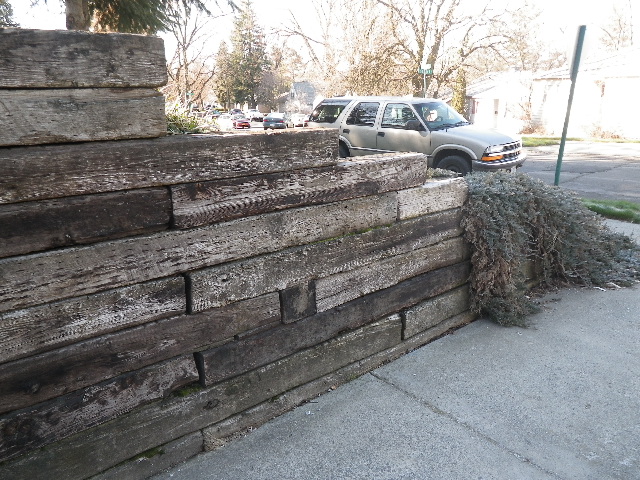 In Pullman and Moscow both, a ‘natural-look’ trend using railroad tie retaining walls took place from the mid-1980’s to about 2000, when masonry block supplanted the trend. The advantage of the railroad ties was the number of them dropped onto the market as local rail lines got torn up and the creosoted wood was nearly given away.
As is usually the case, the contractors that first started using the ties had no idea of what a wall constructed of wood should look like. Mostly, they pretended that it was just like a concrete wall. They stacked the ties, drove spikes through them vertically and—viola’—counted it as good.
In Pullman and Moscow both, a ‘natural-look’ trend using railroad tie retaining walls took place from the mid-1980’s to about 2000, when masonry block supplanted the trend. The advantage of the railroad ties was the number of them dropped onto the market as local rail lines got torn up and the creosoted wood was nearly given away.
As is usually the case, the contractors that first started using the ties had no idea of what a wall constructed of wood should look like. Mostly, they pretended that it was just like a concrete wall. They stacked the ties, drove spikes through them vertically and—viola’—counted it as good.
It wasn’t. The railroad ties are prone to rotating and the spikes aren’t enough to resist the motion. Add to that the ground pressure, especially when the native loess around here gets wet, and the retaining walls tend to pick up a lean pretty quickly.
There’s a way to fix the issue, though. At the time you build the wall, you include tiebacks. Tiebacks can be made with steel rods and use anchor bolts to flat plates at the outside of the wall. A more attractive solution that works equally well is to use the railroad ties themselves as the tiebacks by turning an appropriate number of them perpendicular to the wall, extending into the hillside you are retaining.
If you look at the railroad tie retaining wall in the picture, you can see a tieback in the lower middle part of the picture where the end profile of the tie is visible.
No, I can’t tell you the appropriate number of tiebacks – that is known as engineering and I’m not qualified. As an inspector, I recognize when this has been done (and hasn’t, obviously) and point it out to the client.
Now, for the other problem with using railroad ties in retaining walls, at least in Pullman and Moscow—the ties are a multi-story hotel for carpenter ants.
The creosote coating will keep them from penetrating the surface of the wood but any cut ends or sections that split will provide an entry point. Once inside, the carpenter ants will set up house. Unlike most other wood destroying organisms in the Pacific Northwest, the ants don’t eat the wood. They excavate and create shelters.
While their presence in the wall will weaken it, they’re not yet a threat to your home until they attempt to colonize it in the same manner they took over the railroad ties. As part of a home inspection in Washington State, the inspector is required to inform you of potential conditions conducive to this type of infestation. Note the difference . . . potential. Just because the condition exists, it does not automatically follow that an infestation is imminent.
It would be prudent to have a professional keep an eye on the potential for you and, if it’s a concern, provide treatment options. A pair of companies I like are Sunpest and Hayden Pest Control. {Disclaimer-Sunpest helps me with my dandelion issues.}
Railroad tie retaining walls are an attractive landscaping feature but, when buying a new home, look for the signs (or make sure your inspector looks) of good construction and be mindful of the pest issues. Otherwise, enjoy the natural beauty they bring.
Washinton State Building Code Council
Spending the day in Seattle to attend a meeting of the Washington State Building Code Council, where, odd as it seems, I get to be the public representative. On today's agenda, we have two emergency rules for fire protection for schools and another for townhouses. These are issues that the Council has been working through for the last six months and I think we have some rules now that will gather consensus in both the Council as well the affected stakeholders.
The meeting before the SBCC is the Building, Fire, and Plumbing sub-committee is considering a host of rule changes for the next year. Many of the items are actual clarifications of existing code and those will likely proceed smoothly. Architects and design professionals will see the biggest change.
One that I find very interesting is a proposal to mandate third-party testing of new homes for the testing of the ductwork. This one is more likely to have a direct impact of local and small builders.
Currently, the mechanical contractor is able to perform this testing on their own systems. The request for the change comes for a home performance company and the WSU Energy Program. I find it interesting in the presumption that the contractor is automatically assumed to be corruptible while the third party tester would not be.
From a more practical point of view, I am concerned that this will greatly increase the cost of the testing which will then be passed down to the next homeowner. I'd like to be sure that we have a problem with fraud before we arbitrarily increase builder, and ultimately, consumer costs.
Washington State License #215
Former SBCC Member, Former Chairman State Home Inspector Advisory Licensing Board.














